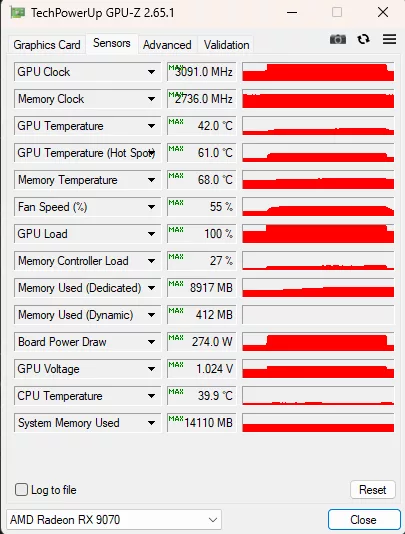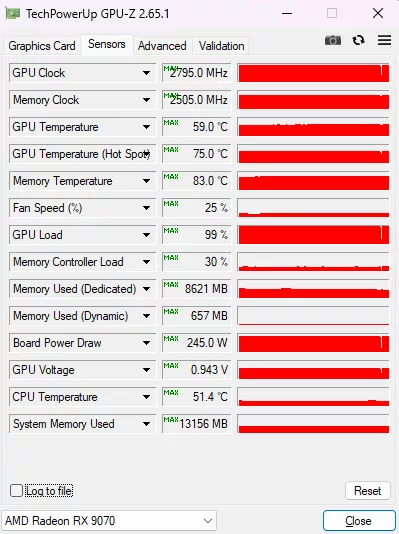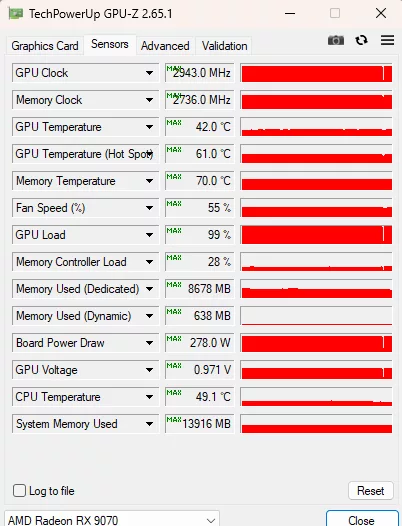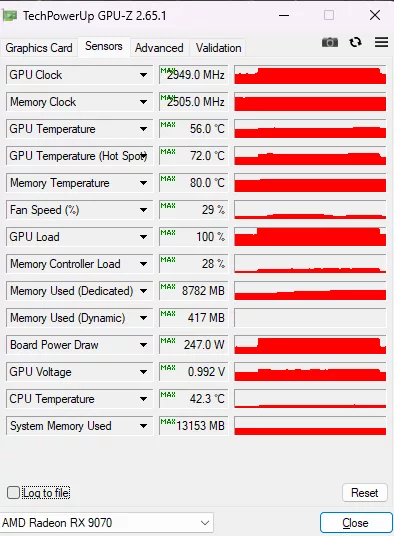Power and Temperature
Power
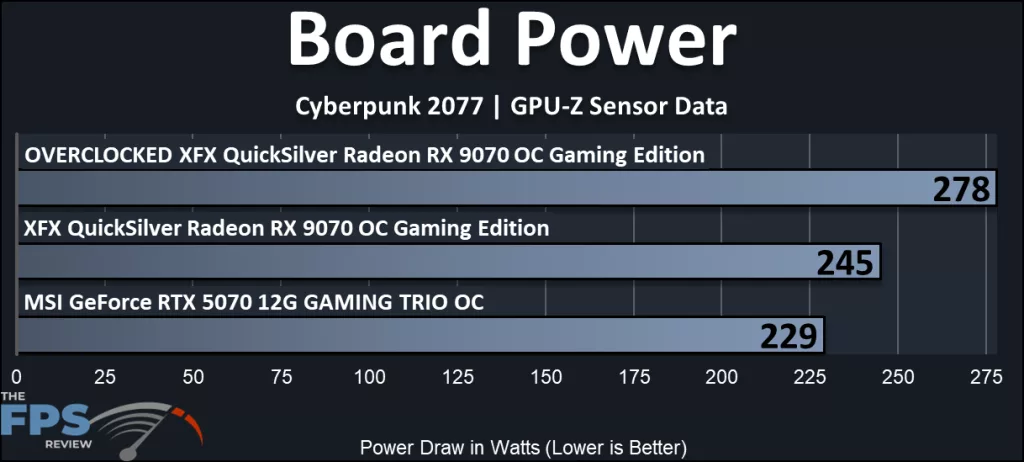
The AMD reference Radeon RX 9070 TDP is 220W, and we can see that the XFX QuickSilver Radeon RX 9070 OC Gaming Edition does exceed this with a higher 245W power draw out of the box. That gives it an edge over the Radeon RX 9070 reference design in power and performance. The XFX QuickSilver Radeon RX 9070 OC Gaming Edition uses the most power by 7%. When overclocked, the percentage increases to 21% versus the MSI GeForce RTX 5070 12G GAMING TRIO OC. The power draw also exceeds the listed total board power in the XFX specifications by 4% and 26%. The results of power usage are essentially equal between the benchmarks for Cyberpunk 2077 and Kingdom Come: Deliverance II.
Temperature
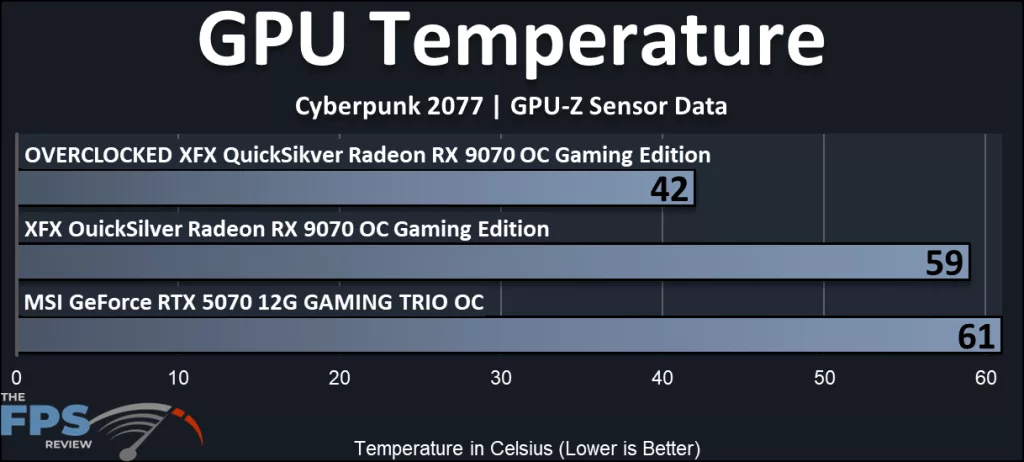
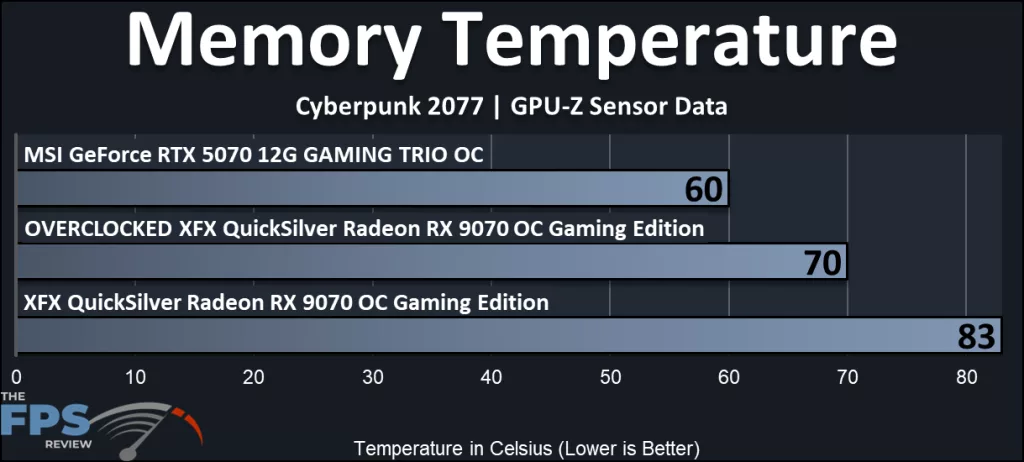
In the graphs above, we look at GPU and memory temperatures. Please be reminded that when the XFX Quicksilver Radeon RX 9070 OC Gaming Edition is overclocked, the fan cycle does change from the default “auto” control to a set curve. The difference here is 25% to 55%. In GPU temperature, the build and effectiveness of the XFX cooling system are obvious.
We should also recall that the MSI GeForce RTX 5070 GAMING TRIO OC also has a very competent cooling system. The efficiency of the XFX QuickSilver Radeon RX 9070 OC Gaming Edition is obvious in overclocked mode. 42C is pretty darn good. The same is true in memory cooling. The difference in increasing the fan cycle on the XFX QuickSilver Radeon RX 9070 OC Gaming Edition while overclocked yields an 18% lower memory temperature.
All this is happening without noticing much in the way of fan noise. Under “auto” fan settings, there is essentially no fan noise at all from either video card. When increased to 55%, we are just barely able to hear a smooth rush of the air on the open bench. You would be hard pressed to hear anything with the XFX QuickSilver Radeon RX 9070 OC Gaming Edition in a case. XFX has designed the cooling on this video card very well. It may be the best performing we have seen, all things being equal.
GPU-Z Screenshots
